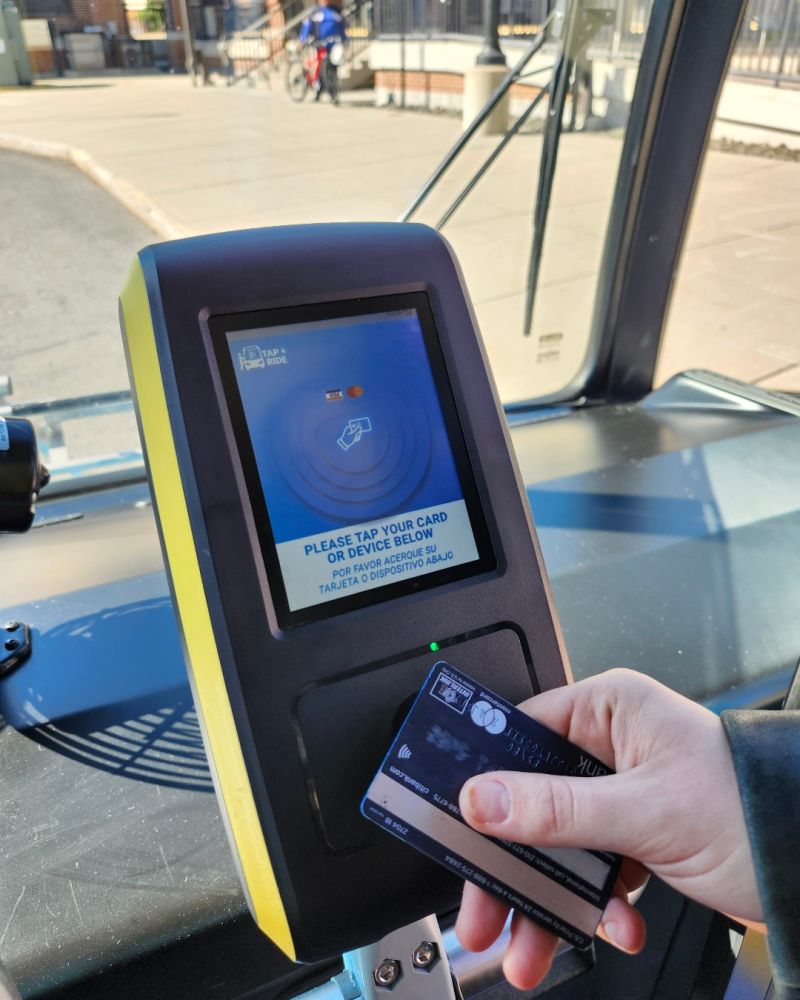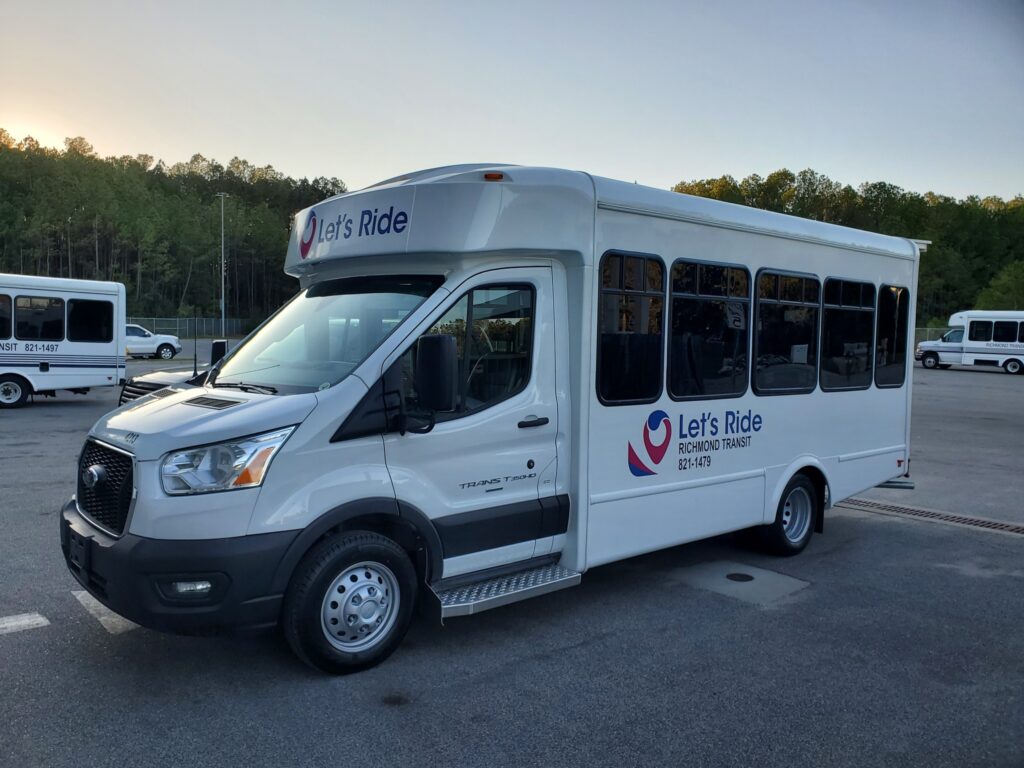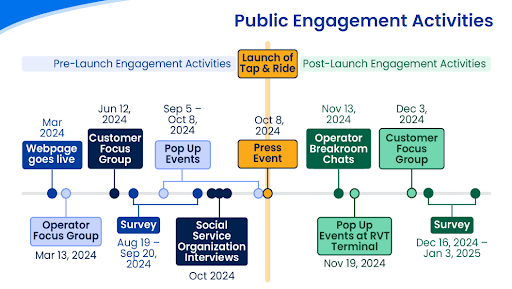Transit Innovation Workshop Series Workshop #3: Integrated Payment: Coordinating Payment Solutions Across Transportation Services
15 minutes Author: Shared-Use Mobility Center Date Launched/Enacted: May 13, 2025 Date Published: May 13, 2025

Introduction
The American Association of State Highway and Transportation Officials (AASHTO) and the Shared-Use Mobility Center (SUMC) hosted the third virtual workshop of a four-part series on how State Departments of Transportation (DOTs) support innovation in transit and shared mobility. These workshops are designed to build on each other to educate on the applications of innovative transit technologies and approaches. The March 2025 workshop explored integrated fare payment systems, including open technology solutions and statewide procurement considerations that can help simplify adoption.
Over 65 practitioners from State DOTs joined the meeting. Following introductions from AASHTO and SUMC highlighting the importance of collaboration within and across states, the workshop delved into the topic of integrated payment solutions, highlighting three State DOT examples:
- Gillian Gillett, Chief, Division of Data & Digital Services Program Manager, California Integrated Mobility at the California Department of Transportation, addressed the state of public transit payment systems in the US. Gillian highlighted a disparity in payment methods, with lower income individuals relying more on cash, underscoring the need for accessible payment solutions. While non-cash payment standards like EMV are becoming more common, the high upfront cost of updating farebox technology can be a barrier to implementing open-loop payments in public transit.
- Troy Green, Program Delivery Manager with the Georgia Department of Transportation (GDOT) Division of Intermodal Programs, presented on GDOT’s rural farecard and contactless payment project, an initiative to create a statewide payment system allowing riders to travel on any system using the same digital or physical contactless farecard issued by any of the participating transit agencies.
- Daniel Baker, Transportation Supervising Planner with the Connecticut Department of Transportation (CTDOT) Office of Transit & Ridesharing, presented on CTDOT’s Tap & Ride pilot program. Supported by a US Department of Transportation Strengthening Mobility and Revolutionizing Transportation (SMART) grant, CTDOT implemented a contactless payment system across multiple service providers throughout the state.
Definitions
- An open-loop payment is any widely accepted digital payment method where the entity issuing the payment medium is different from the entity accepting it. Open-loop payment systems are most commonly seen as debit or credit accounts typically issued by a bank, tied to a consumer bank account. Open-loop payments are agnostic to financial institution and allow for a variety of payment methods, like debit cards, credit cards, or bank card-enabled smartphones or smartwatches.
- A closed-loop payment system is affiliated with a particular merchant, or in the case of public transit, a specific transit system and a particular, proprietary technology. A closed-loop system will only accept payment from its own pre-loaded card or mobile app; the card or app, in turn, can only be used for payments on that system. A closed-loop payment system allows the merchant (or transit agency) complete control of the payment system, but limits interoperability and data exchange with other systems.
- Contactless payments allow users to tap a card or mobile phone on the terminal, which uses low-power wireless technologies like Near Field Communication (NFC) to initiate a transaction. In a transit context, this allows riders to tap to pay their fare onboard a bus or directly at a faregate with the same card and motion they might use to purchase something at a retail establishment, eliminating the need for a separate paper ticket, transit card, or digital ticket.
- The EMV (Europay, MasterCard, and Visa) Standard is a global technical and security standard for chips on bank cards. When someone uses an EMV-enabled device for payment, the transaction is authenticated, verified, and authorized at the terminal; the system ensures that the payer has enough funds in their account to cover the transaction.
- EMVCo is a global standards body, managed by a consortium of several bank card providers, that oversees the EMV standard and other specifications for secure payment technologies.
State DOT efforts to support integrated payments
Travelers have more options than ever to get around, with a growing variety of services and modes to choose from. But the full benefit of this variety can only be realized if transit agencies and mobility operators can integrate their systems consistently and seamlessly. One of the most effective ways that agencies are approaching this integration is through payment technologies. Once, a rider transferring between two different mobility services would have to purchase two separate tickets or fares, potentially creating separate accounts in each provider’s system. Integrated payment technologies allow riders to use the same payment method on multiple services. This is particularly relevant for rural areas, where people might need to travel long distances and across jurisdictional boundaries to their destinations. The ease of integrated payments across transit systems and mobility interoperability can support more user-friendly and connected transit systems, increasing ridership and retention, and attracting new riders.
State Departments of Transportation (DOTs) are uniquely positioned to support the adoption of integrated payment systems. State DOTs can support local agencies in procuring technology, applying for federal grants, and facilitating coordination across jurisdictional boundaries. State DOTs can also play a key role in educating riders on the benefits of new payment systems.
Approaches to integrated transit payment systems

Credit: GDOT
State DOTs are taking varying approaches to supporting payment integration and mobility interoperability. GDOT recently launched a statewide contactless payment program to improve coordination between county and regional systems and enhance user experience. Under the program, riders use a reloadable physical or digital card issued by any of several participating rural transit agencies to access any of the participating systems. Riders use an online platform to book rides, pay fares, or reload their cards. In addition to facilitating transfers between services, GDOT’s project also served to strengthen partnerships and improve coordination between county and regional agencies through a statewide ride marketplace. Partnering agencies post and accept rides on the marketplace, allowing riders to book a trip in one area and seamlessly travel to another, removing the barrier of siloed transit agency operations. This allows users to view route options for cross-jurisdictional trips from their location. To better coordinate interagency trips, rides would be divided based on predetermined transfer points, which serve as links between providers for long distance trips.
Another approach to payment integration is through the adoption of open-loop payments.(See definitions above.) Open-loop payments gained traction globally around 2010 and their use accelerated in the US during the COVID-19 pandemic, when it became commonplace to pay at retail points of sale using contactless technology. The US transit industry is in the midst of transitioning from closed-loop systems to open-loop systems, though currently no US systems are exclusively open payment; most open-loop implementers in the transit industry are hybrid systems that also maintain closed-loop payment options, offer a mobile app, or continue to accept cash.
Various state entities are working to implement open-loop payment options on transit. The Connecticut Department of Transportation (CTDOT) Tap & Ride project is a notable example. This project enabled open-loop payments on multiple providers, including two transit systems (CTtransit Meriden Division and River Valley Transit in Middletown). These systems serve multiple smaller municipalities and riders often transfer between them. The Tap & Ride initiative aims to facilitate seamless transfers for riders, eliminating the need to purchase multiple passes before boarding. The first phase of the pilot launched in September 2023, and aimed to provide a proof of concept in integrating fare policies across multiple service providers.
Funding and procurement
Though securing funding for integrated payment systems can be a challenge, a variety of funding opportunities for state DOTs and transit agencies can support these systems’ development. In particular, there are a number of federal grants specifically focused on technology upgrades to improve transit systems that implementers can look to. CTDOT’s Tap & Ride pilot was funded by a US Department of Transportation Strengthening Mobility and Revolutionizing Transportation (SMART) grant. Other strategies, such as leveraging formula funds, can be used to support technology upgrades and integrated fare payment systems. GDOT used this approach to launch its contactless rural fare card program. Since the agencies included in the project are rural agencies, 5311 Rural Area Formula funds helped support the project.
Procurement of integrated payment technologies can be a significant challenge for individual transit agencies, particularly small ones. A key issue is that most large-agency fare systems are traditionally custom and proprietary, and thus harder to interoperate, replicate, or scale. The California Department of Transportation (CalTrans) has taken a state-level approach to supporting integrated payment technology through the California Integrated Travel Project (Cal-ITP). Cal-ITP supports the adoption of open-loop payments and other integrated payment systems through its Mobility Marketplace, which features California State Purchasing Schedules with multiple vendors in each category with whom transit agencies can contract, including fare collection hardware/software and data plans. Though the Mobility Marketplace is available to transit agencies of any size in the state, it is geared to medium and smaller transit agencies because of the product gaps in the market, and the lesser buying power of these agencies. Mobility Marketplace resources lower entry costs for the technology and let smaller agencies access economies of scale.
Although CTDOT initially procured hardware and software for the Tap & Ride program through an interstate purchasing schedule from Cal-ITP’s Mobility Marketplace, FTA has since released guidance on third-party contracting covering how grantees can award and administer contracts to subcontractors and vendors. The circular clarifies that using other states’ purchasing schedules, like those on the Mobility Marketplace, is no longer allowed for FTA grant recipients. However, these agreements can still be supported by state efforts, and can serve as a useful model for agencies seeking to understand costs and other contracting considerations for implementing new payment technologies.
Encouraging adoption
State DOTs can support the adoption of integrated payment systems in a variety of ways. As noted earlier, CalTrans’ promotion of integrated payment systems through the Mobility Marketplace addresses procurement, one of the most significant barriers to adoption. When state DOTs help simplify these processes, it encourages local agencies to move forward and signals that they have state-level support if challenges arise.
State DOTs can also help with marketing new payment technologies and educating the public on their use. One approach is by leveraging reward and incentive programs. The reward programs can be effective when used as incentives to encourage riders to adopt these new payment options by offering benefits for using the new systems. Improved outreach and marketing also raise awareness among riders about the availability of new payment options and associated benefits, such as fare capping. CTDOT identified the need to educate customers about the availability and benefits of fare capping, which can reduce riders’ transportation costs.

A timeline of CTDOT’s public engagement activities. Credit: CTDOT
Local agency benefits
Transit agencies can benefit immensely from implementing integrated payment systems. These systems allow riders to access multiple transit options without having to create multiple accounts, making for more seamless travel, and can increase ridership, reduce operational costs, and support interagency coordination efforts. With open-loop systems, riders can use transit more easily, without needing to buy an agency-specific farecard, stand at a ticket vending machine, or carry cash. For travellers who use multiple transit systems, they already carry a universal payment system that will work without having to create separate accounts. This has the added benefit of speeding boarding, often improving on-time performance and reducing dwell times.
Additionally, open-loop payments can also save transit agencies money through reduced transaction and infrastructure costs, by reducing or eliminating the need for ticket machines, card issuance, and staffing for ticket counters. Agencies may be able to move staff from behind counters to the fare gates to provide more direct assistance to customers.
Challenges and risks
Implementing payment integration technologies can come with risks and challenges. As with any project aimed at integrating services from multiple agencies or providers, making sure each mobility provider is on the same page can be a hurdle. Each has their own systems and technological capacity. Furthermore, rural or other small agencies may hesitate to adopt new systems due to concerns about the cost of implementation and maintenance, quality of available infrastructure, or limited staffing to support the initiative. Increased outreach and education may be required to secure participation from rural providers.
Integrating or launching new payment systems in public transit typically involves adopting a suite of new technologies, systems, and software. This can be a challenge for agencies unfamiliar with new technologies and requires additional training and education for both staff and riders. For GDOT, this was one of the local agencies’ biggest challenges when launching the fare card program. GDOT provided both initial and follow-up training to equip dispatchers and drivers with the skills to use new technology, but fully using that technology has remained a barrier for operators, as well as for less technologically savvy riders.
State DOTs may also face challenges in coordinating across numerous providers, particularly when identifying and determining appropriate fare collection methods. This is especially true for rural operators and human service providers. These services often follow complex fare structures, with rates varying based on factors like distance, geographic jurisdiction, funding source, or individual service needs. GDOT highlighted this variety in fare programming as a major challenge to implementing their program.
For riders, a key issue is that updated payment systems often rely on digital payments, in which users add funds to a card or account via an app or website. This can exclude people who are unbanked or do not have access to digitally linked payment methods, like credit or debit cards. Maintaining acceptance of cash payments for unbanked riders can sometimes be at odds with project goals to eliminate agency cash handling for safety and efficiency reasons. There is still a significant need for implementers to develop solutions to ensure that these integrated payment options, and the benefits they bring, are available to everyone.
Conclusion
Transportation providers around the country are exploring service coordination to increase efficiency, modernize transit systems, reduce operational costs, and improve the customer experience. One of the most significant ways providers are working to coordinate is through payment integration projects. As demonstrated by GDOT, CTDOT, and CalTrans, state DOTs can play a number of key roles in supporting transit agencies working on payment integration and moving these projects forward, including helping with procurement, establishing interagency and interjurisdictional partnerships, and promoting education for both riders and agency staff to ensure that these projects can be implemented smoothly and effectively and that their benefits accrue as widely as possible.